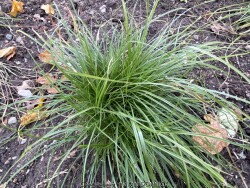
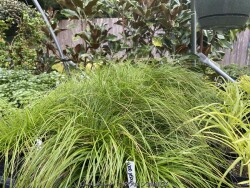
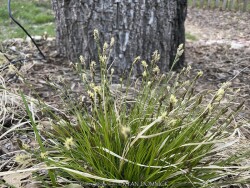
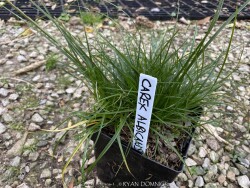
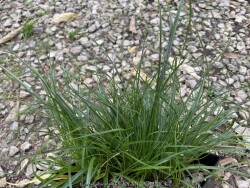
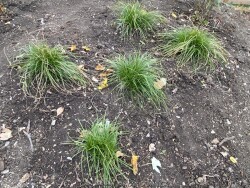
Plant Min Zone: 4a
Plant Max Zone: 8a
Sunlight: Part Sun, Shade
Water / Rainfall: Low, Average
Soil Quality: Average, Rich
Bloom Season: Insignificant
Flower Color: Insignificant
Berry / Fruit Color: None
Spring Foliage Color: Green
Summer Foliage Color: Green
Fall Foliage Color: Green
Evergreen Foliage: Some
Winter Interest: Some
Scented Flowers: No
Drought Tolerance: Medium, High
Wet-Feet Tolerance: Low
Humidity Tolerance: Medium
Wind Tolerance: Medium
Poor Soil Tolerance: Clay Soils, Rocky Soils, Sandy Soils
Height: 0.5' - 1'
Width: 0.5' - 1'
Growth Rate: Slow
Service Life: Long: 5-10 years
Maintenance Need: Medium
Spreading Potential: Extremely Low
Yearly Trimming Tips: Trim Ornamental Grass to Ground in Early Spring before New Growth: Has Winter Interest.
Plant Grouping Size: Small Grouping of 3-5, Medium Grouping of 5-10
Best Side of House: East Exposure, North Exposure
Extreme Planting Locations: Root-Bound Soils Under Tree
Ornamental Features: Fine Texture
Special Landscape Uses: Groundcover, Lawn Substitute
Possible Pest Problems: Weed Competition
Plant Limitations: Sometimes Mistaken as Weed
Carex albicans, commonly called White-Tinged Sedge, is native to eastern North America, where its typical natural habitat is dry forests and woodlands. It forms a weed-suppressing grass-like clump 12" tall with brown seed heads dangling above. Bright green foliage is extremely fine-textured and hair-like. White-Tinged Sedge is one of the most drought tolerant of the sedges earning a spot in the dry shade garden; it cannot handle extreme drought or extremely rootbound soils though. Root rot can be a problem in poor drainage areas. It prefers average to dry garden conditions with dappled or morning sun. Sun burning is possible with temperatures over 100° so avoid full afternoon sun. Plantings can thrive for many years if in the right spot and there is no such thing as overcrowding. The growth rate is slow at first but eventually forms a nice weed resistant cover so space new plants relatively close together is desiring this effect.